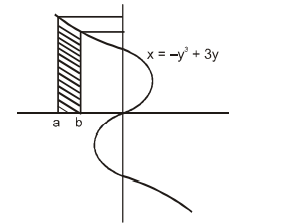Q.
Consider the functions defined implicitly by the equation $y^3-3 y+x=0$ on various intervals in the real line. If $x \in(-\infty,-2) \cup(2, \infty)$, the equation implicitly defines a unique real valued differentiable function $y=$ $f(x)$.
If $x \in(-2,2)$, the equation implicitly defines a unique real valued differentiable function $y=g(x)$ satisfying $g(0)=0$
The area of the region bounded by the curve $y=f(x)$, the $x$-axis, and the lines $x=a$ and $x=b$, where $-\infty < a < b < -2$, is
Integrals
Solution:
